Here’s a comprehensive breakdown of Dutch process cocoa powder and regular / natural cocoa powder. Learn the difference between Natural vs Dutch process cocoa powder, their composition, colors and flavors, and when to use either cocoa powder for your baking needs.
Everything you need to know about how Natural and Dutch cocoa powder work, and how and when to use them in recipes!
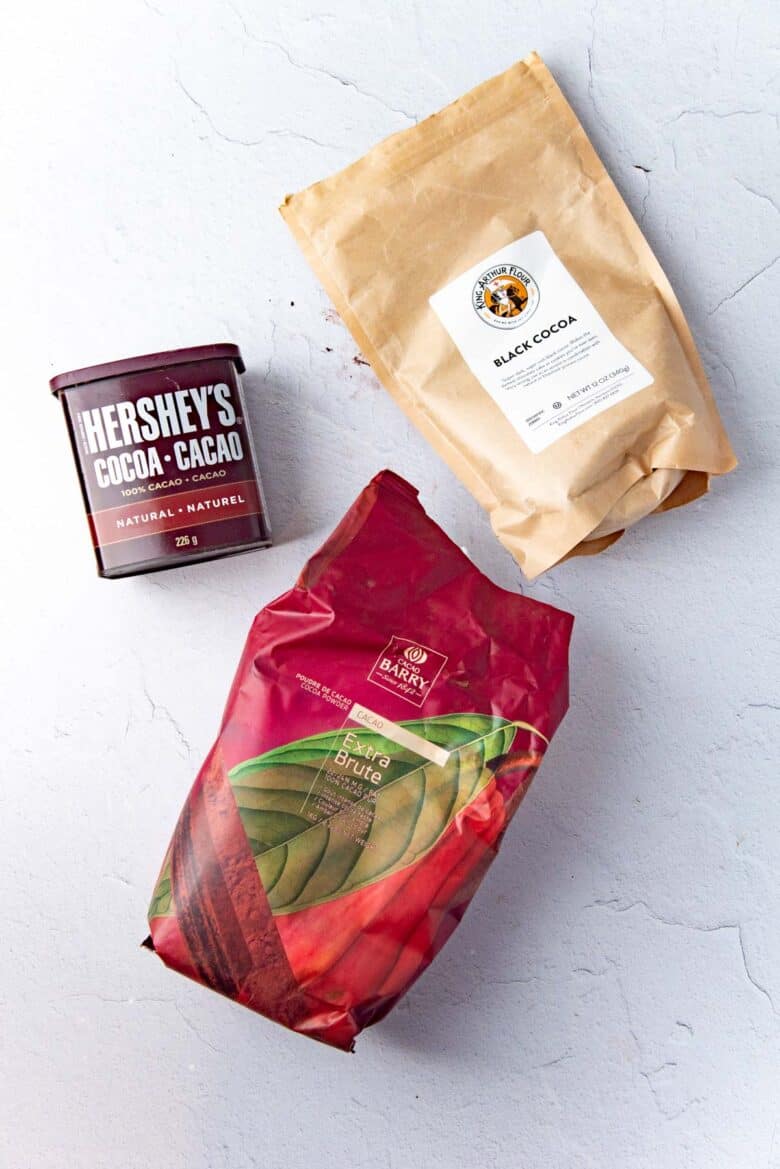
- Everything you need to know about how Natural and Dutch cocoa powder work, and how and when to use them in recipes!
- What is cocoa powder & how is it made?
- Natural cocoa powder
- Dutch process cocoa powder
- When to use Natural cocoa powder vs Dutch cocoa powder
- Chocolate cake – An example
- What if the recipe doesn’t specify which type of cocoa powder to use?
What is cocoa powder & how is it made?
Cocoa powder is a by product of processing cacao beans. When you process cacao beans, you can create several different products such as,
- Cocoa nibs
- Chocolate liquor – liquid chocolate
- Unsweetened chocolate – solid chocolate
- Cocoa butter
- Natural cocoa powder
- Dutch process cocoa powder
Cocoa powder is made by processing chocolate liquor. The chocolate liquor is poured into large pumps, and then under high pressure, it’s pressed to separate cocoa butter from the rest of the cocoa bean parts.
Once the cocoa butter is extracted, what’s left is a cocoa bean particle “cake”. This cake is then cooled, ground, and sifted to get cocoa powder.
Cocoa powder can have varying colors as well. This depends on,
- The type of cacao bean that was used – different regions may have different colors.
- How long the cacao bean was roasted for.
- Whether it has been alkalized (dutch process).
- How much it has been alkalized.
When the cocoa butter is pressed out of the liquor, some of the fat still remains with the remaining “cake”. This is why cocoa powder still contains some cocoa butter.
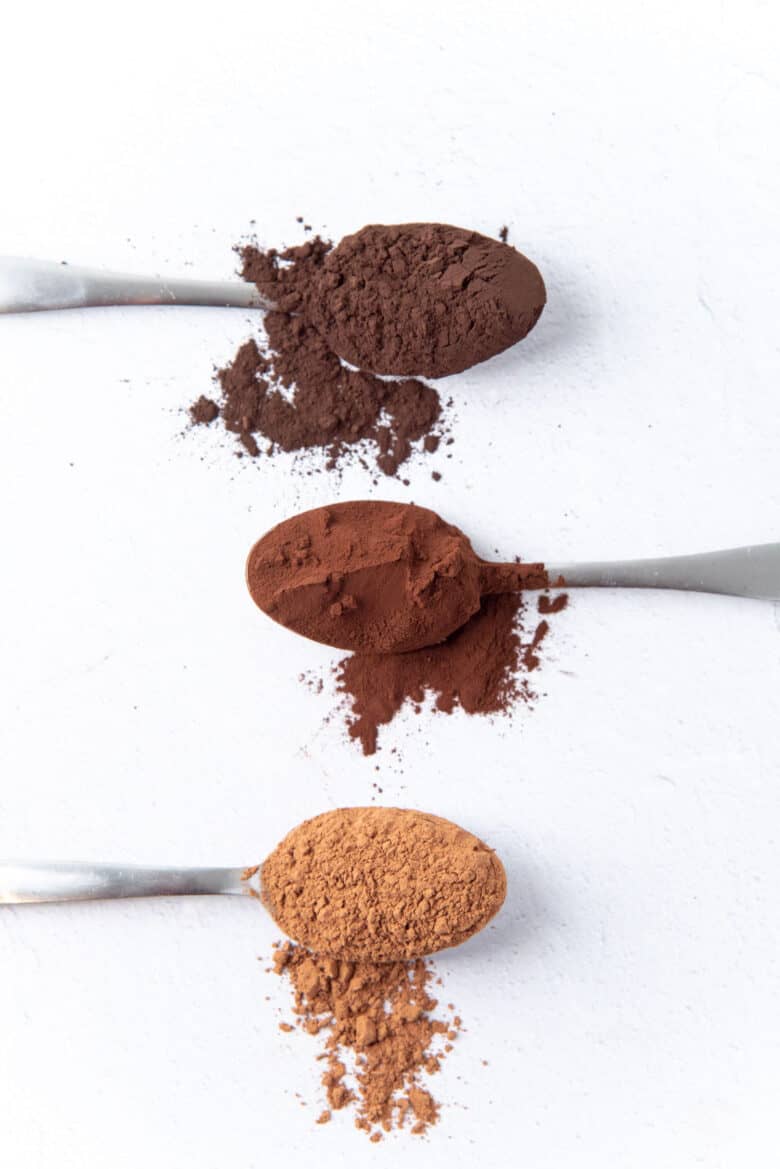
How much fat can be found in cocoa butter?
The amount of fat in cocoa butter can vary, and you can purchase cocoa powder according to the amount of fat or cocoa butter in it.
Usually the highest percentage of cocoa butter in cocoa powder is 24%. The most widely available cocoa butter in the US (or North America) is about 12%. In Europe, it’s about 20 – 24%.
- Regular cocoa powder – 10 – 12% cocoa butter. Also known as 10/12 cocoa powder.
- Low fat cocoa powder – 0.5% cocoa butter.
- High fat cocoa powder – 22 – 24% cocoa butter or 20 – 22% cocoa butter. Also known as 22/24 or 20/22 cocoa powder.
The fat content in cocoa powder can be flexible in a recipe. However, please note that cocoa powder with a higher fat content will have a richer, deeper flavor than cocoa powder with a lower amount of fat.
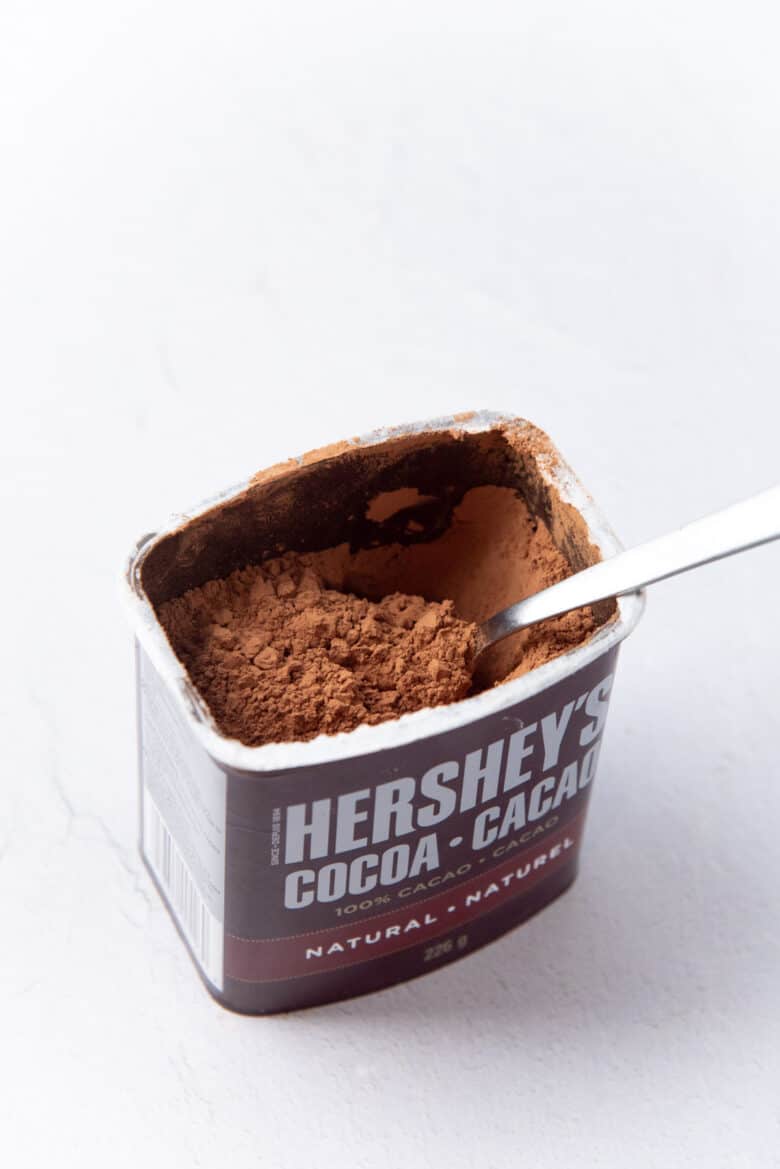
Natural cocoa powder
This is the type of cocoa powder that is more widely available in supermarkets in the US and Canada. It’s usually labeled “Natural Cocoa Powder” as well. This type of cocoa powder has not been chemically treated.
The color
The color of this cocoa powder is very dependent on the source of the cacao beans and the roasting time. It can vary from a tan color to a dark yellowish brown.
The flavor
Has a more sharp and bitter flavor. Due to the acidity, this cocoa powder also has an astringent flavor. It also tends to have more citric, fruity notes.
Just like cocoa beans, natural cocoa powder is acidic with a pH level ranging between 5 – 6. This is why cocoa powder is used as an acid in baking to react with baking soda.
Cocoa powder is usually sold without sugar / unsweetened.
If the cocoa powder has added sugar, then it’s usually a hot cocoa mix, and is not ideal to be used as a replacement for natural cocoa powder in baking.
You can also purchase natural cocoa powder as 10/12 type, 22/24 type, or the low fat cocoa powder.
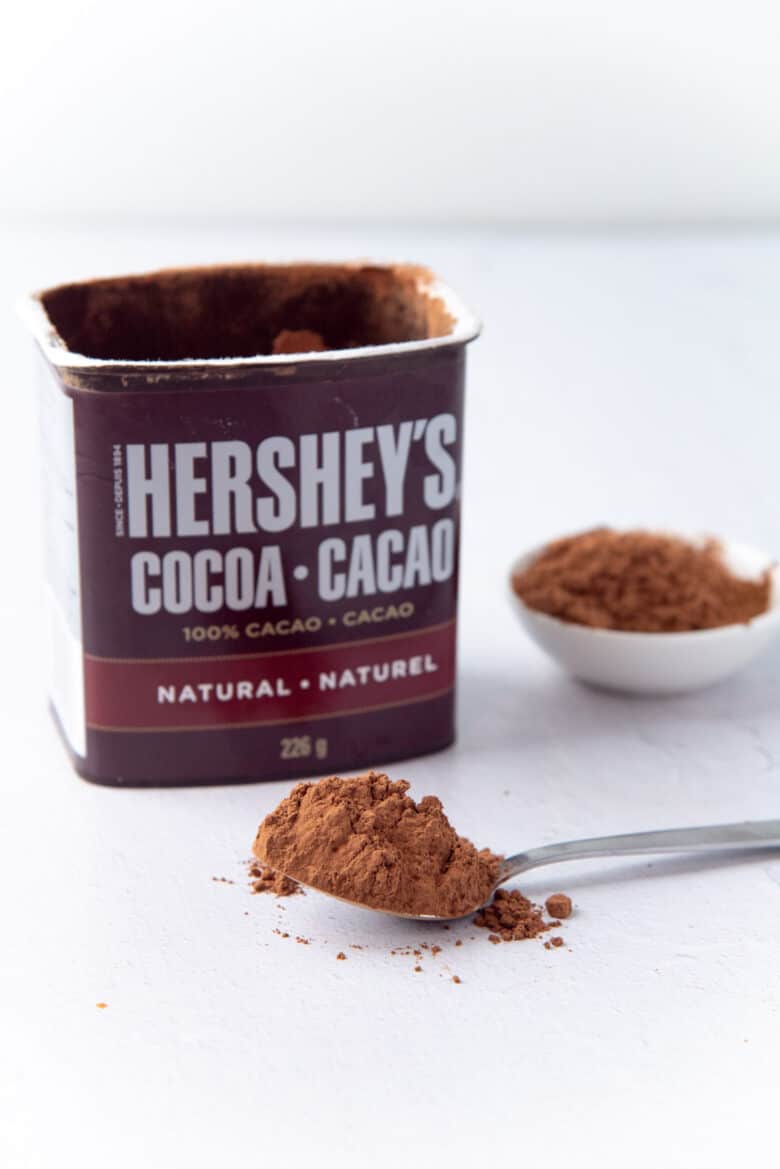
Dutch process cocoa powder
Dutch process cocoa powder is more widely available in Europe, however, it’s also the cocoa powder of choice in bakeries.
The color
Ranges from light reddish brown to dark reddish brown. In some cases, Dutch process cocoa can also be black and is known as black cocoa. You can also find this cocoa powder that is red in color, which is marketed as rouge cocoa powder.
Dutch process cocoa powder is darker than natural cocoa powder.
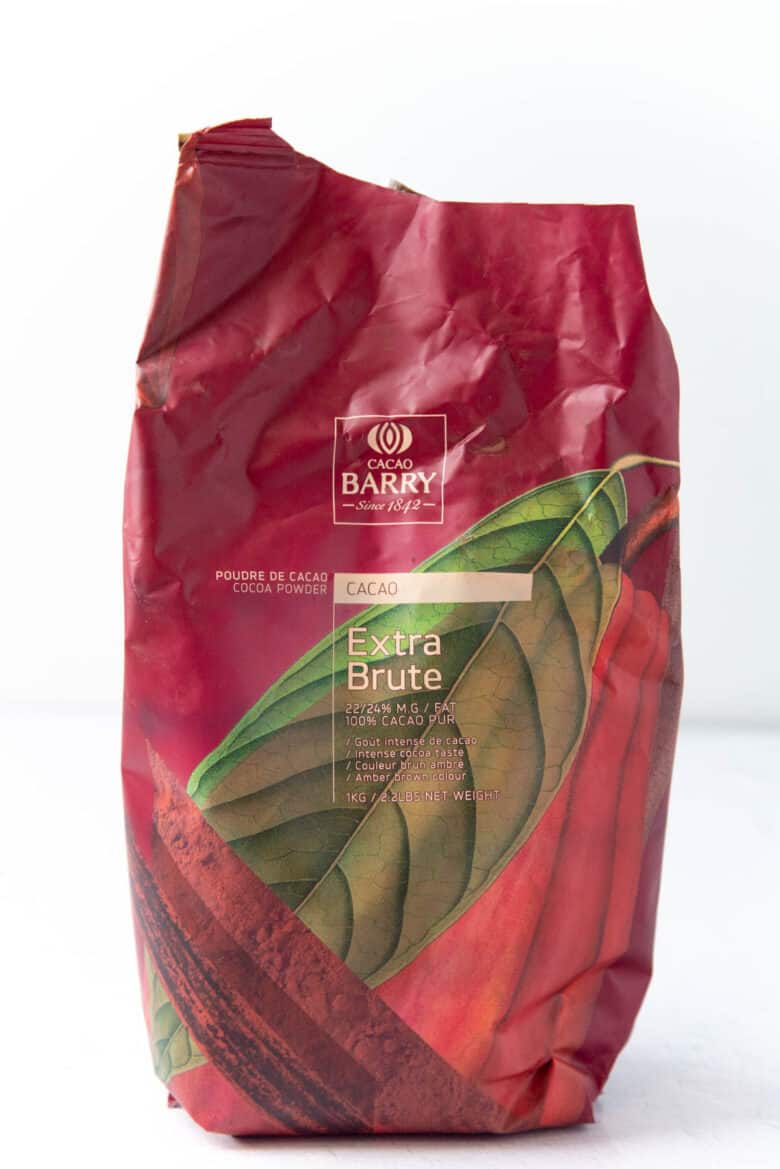
The flavor
The flavor of dutch process cocoa powder is more smooth, and less bitter than what you’ll find with natural cocoa powder. It is less acidic, so not as astringent, and has a more mellow, full-bodied flavor.
When making dutch process cocoa powder, the alkalizing process occurs at the cocoa bean stage. The cocoa beans are treated with a mild alkali to neutralize the acidity. The alkali that’s used for this is usually potassium carbonate or sodium carbonate. Once neutralized, the pH level will be 7 or above.
Dutch process cocoa powder is also known as,
- Alkalized cocoa powder
- Dutched cocoa powdeer
- European style cocoa powder
Since the beans are alkali treated, you can still get cocoa powder with varying fat amounts. So it’s still possible to manufacture,
- 10/12 dutch process cocoa powder
- 22/24 dutch process cocoa powder
Dutch process cocoa powder is definitely my favorite cocoa powder to use as well. The flavor is better because it’s deeper, less bitter, richer, and the color also yields a rich look.
My favorite brands of dutch process cocoa powder are Callebaut / Cocoa barry, or Valhrona.
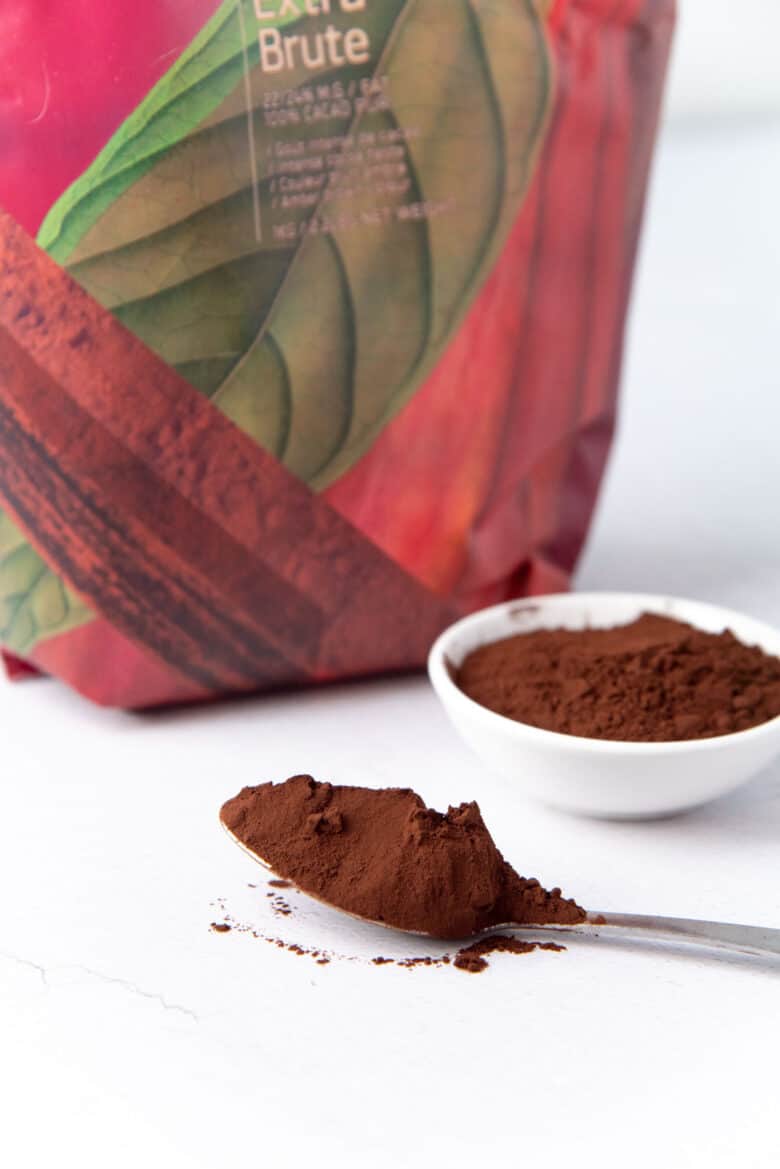
When to use Natural cocoa powder vs Dutch cocoa powder
Natural cocoa powder is used more widely in American / North American households, while Dutch process is more widely used in Europe. Both types of cocoa powder can be used interchangeably in SOME situations.
As a rule of thumb, always use the type of cocoa powder specified in the recipe. The recipe creator would have tested the recipe with a particular cocoa powder, so you can only get comparable results if you use the same type.
You can almost always use natural cocoa powder instead of dutched cocoa powder, but the reverse is not always true. It is more complicated when trying to substitute dutch process cocoa powder for natural cocoa powder.
As I’ve mentioned, natural cocoa powder is mildly acidic in nature. If the recipe ingredients include natural cocoa powder, and baking soda, DO NOT substitute the natural cocoa powder with dutch process. This is because the acidity reacts with the baking soda to create leavening. If use use dutch process cocoa powder, it won’t react with the baking soda, and you will end up with a dense cake with a soapy, salty aftertaste.
If the recipe doesn’t call for any leavening, you can substitute the two types of cocoa powder without an issue. However, since dutch cocoa powder has a more smooth flavor compared to natural cocoa powder which is slightly bitter, the flavor profile could likely change if one is substituted with the other.
For example, I make my chocolate brownies with dutch process cocoa powder, and the results are an incredibly delicious brownie with a deep flavor of chocolate! You CAN substitute with natural cocoa powder here, but the flavor will be more bitter and strong.
Chocolate cake – An example
Let’s take a close look at my chocolate bundt cake recipe.
This recipe uses natural cocoa powder and baking powder. It also includes an extra acid – sour cream. However, when I recipe tested this cake using dutch process powder, the cake was a little stodgy and shorter than the cake with natural cocoa powder. The natural cocoa powder version had a lighter, tender crumb, and was a little taller too (see picture below).
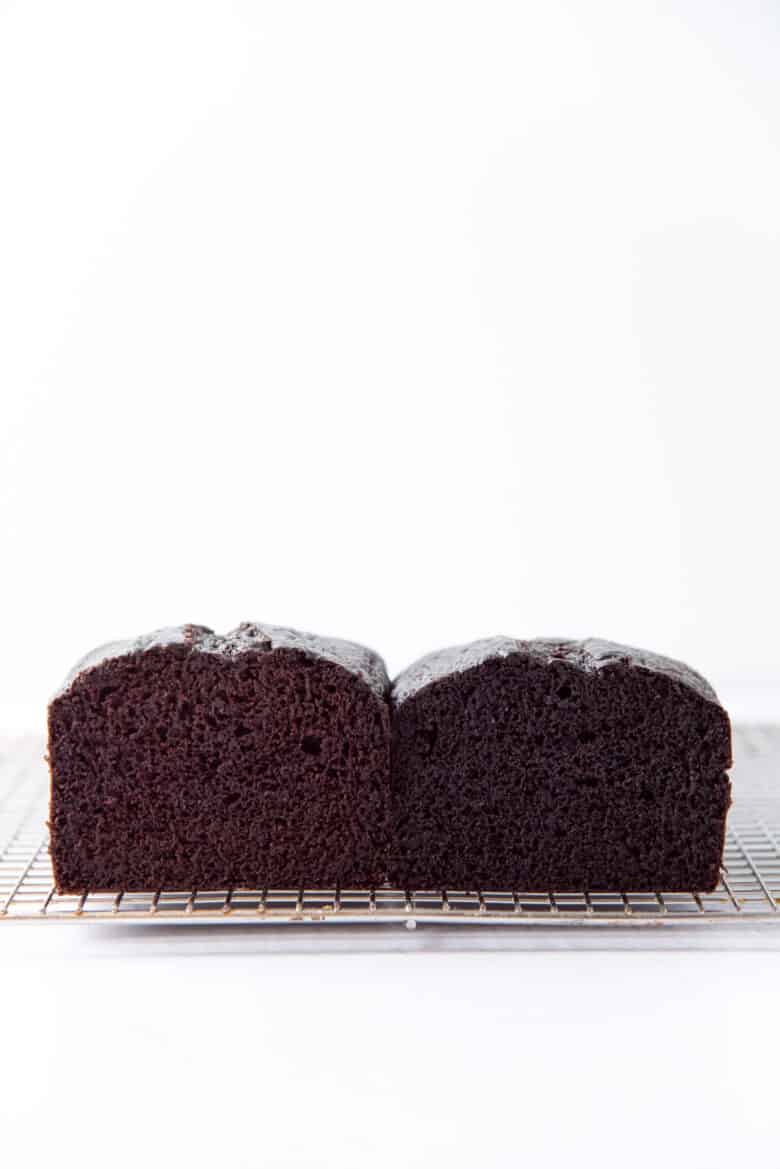
Another difference is the color of the cakes. The natural cocoa powder produced a cake that has a lighter color than the one made with dutch cocoa powder. Due to the presence of baking soda, the color darkened overall in both cakes, but the dutch cocoa powder is closer to black than brown!
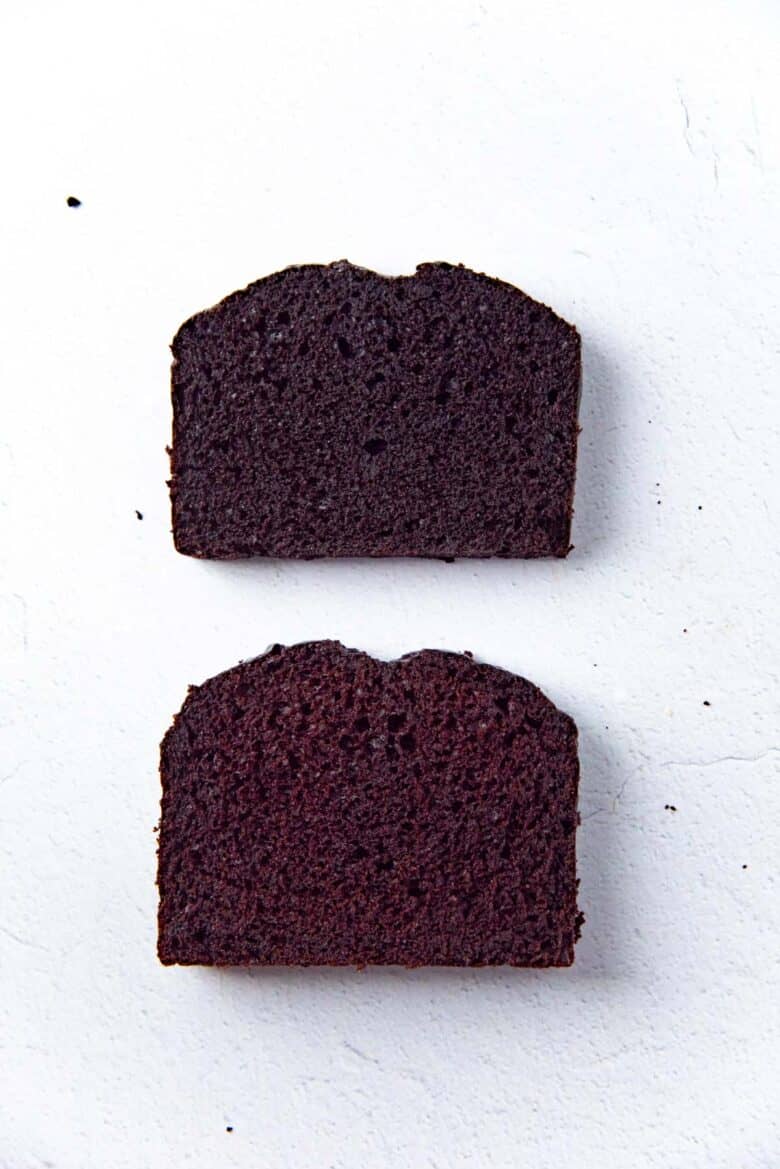
What if the recipe doesn’t specify which type of cocoa powder to use?
First thing to do if you can is to find out if the recipe creator is from the US or Europe. If they are from the US, it’s very likely that they are using natural cocoa powder. If they are from Europe, then it’s likely they are using Dutch process cocoa powder.
However, this is not true in my case. I live in Canada, and I almost exclusively use dutch process cocoa powder, unless I specify that I use natural cocoa powder in a particular recipe.
Next, take a look at the recipe.
If a recipe uses baking soda and no other leavening or acid, then it’s very likely that natural cocoa powder is used in the recipe.
However, if the recipe uses baking powder, you could use either natural cocoa powder OR dutch process cocoa powder.
If no leavening is used, then you can safely use either cocoa powder as well. But keep in mind that the flavor will change depending on which type of cocoa powder you use.

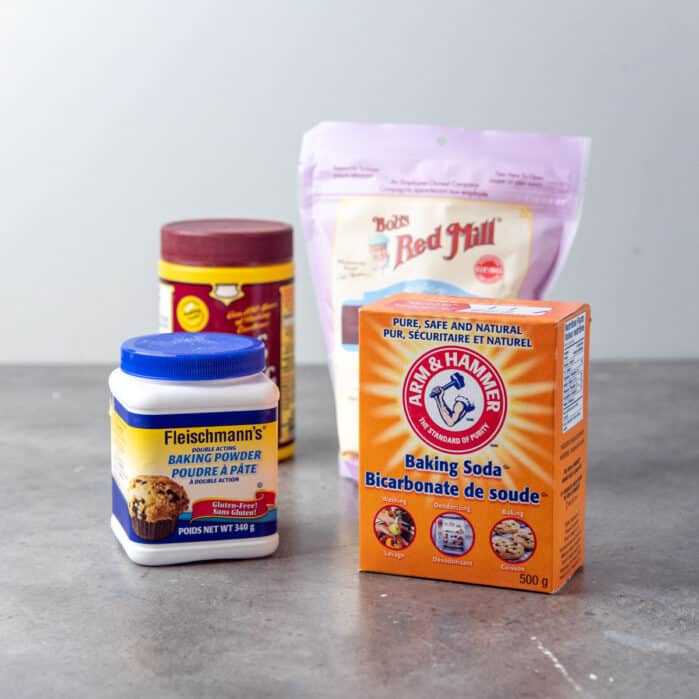
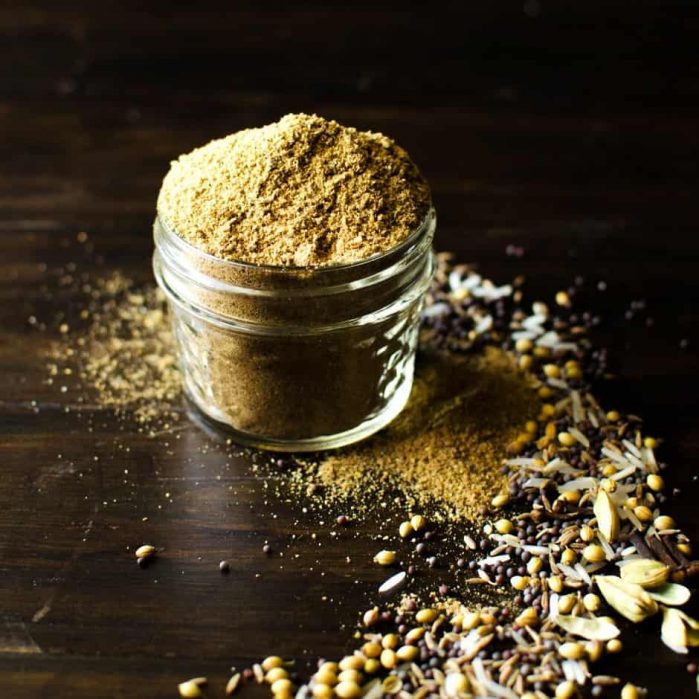
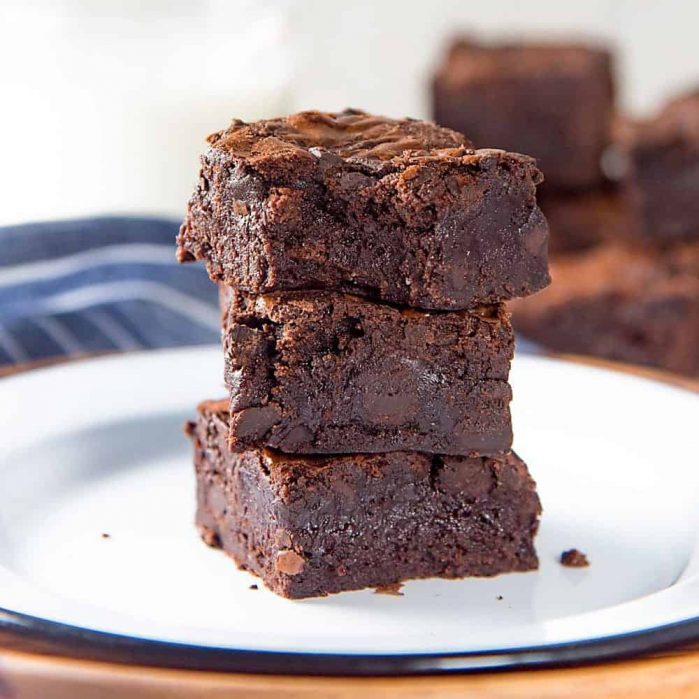
Leave a Review